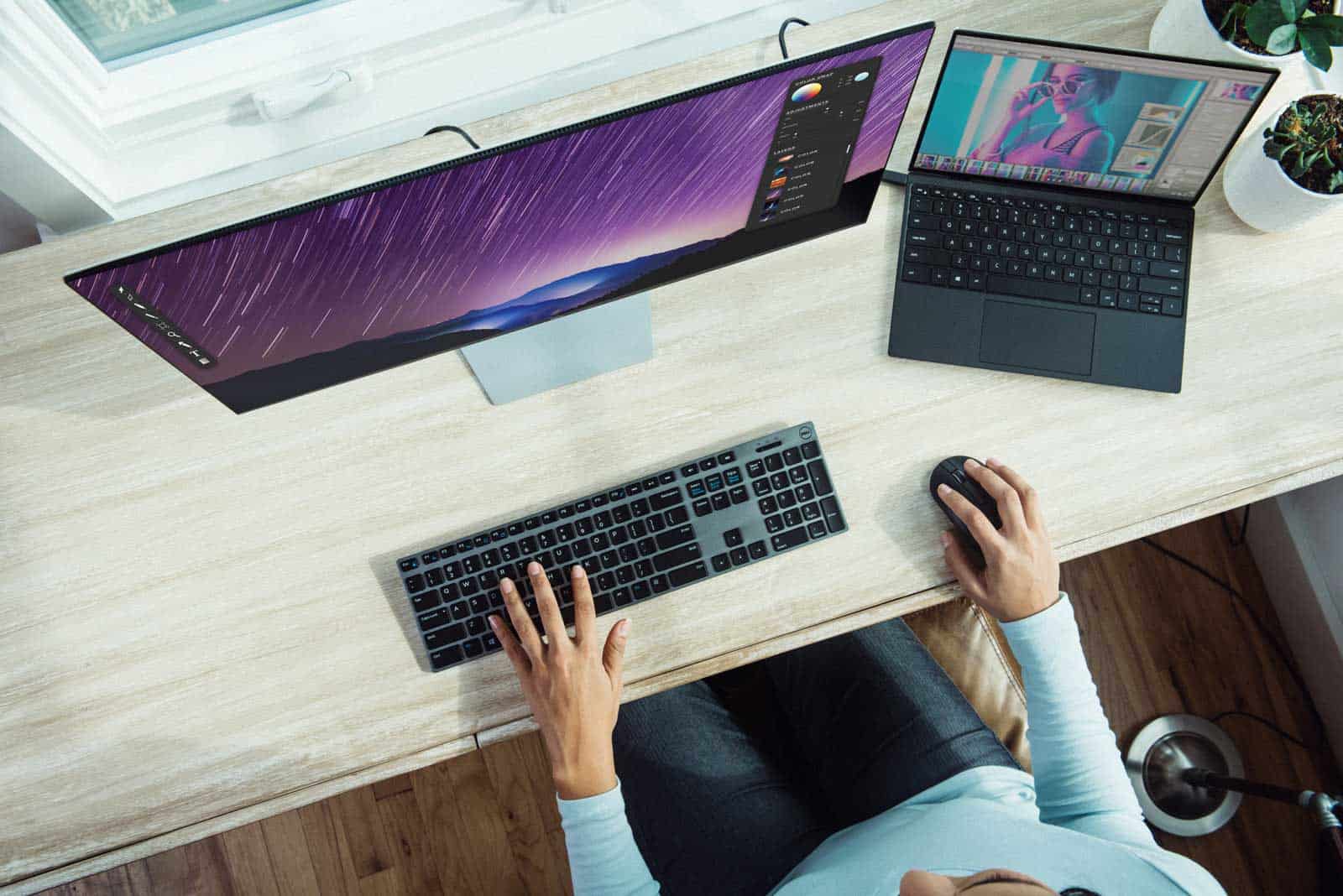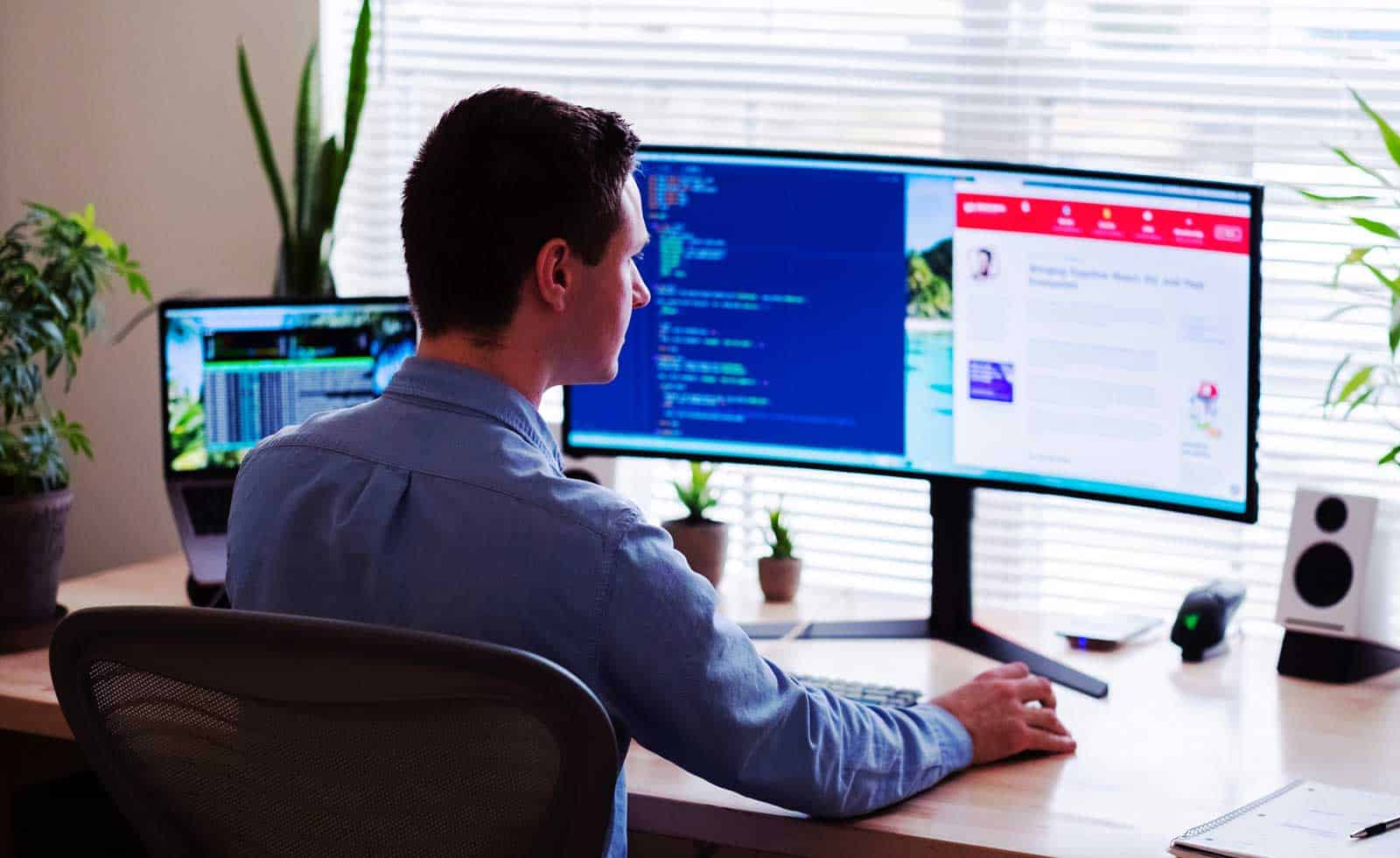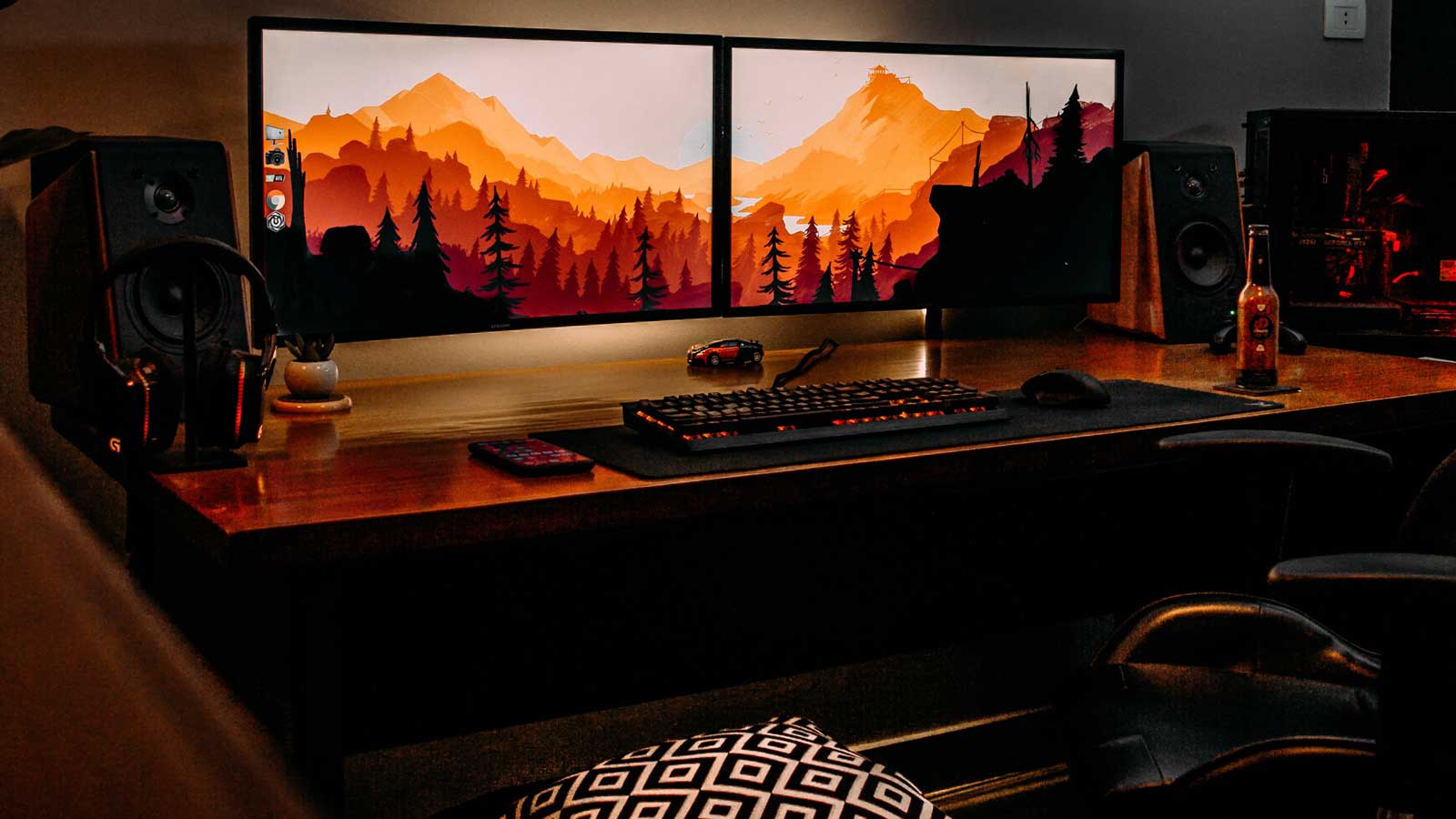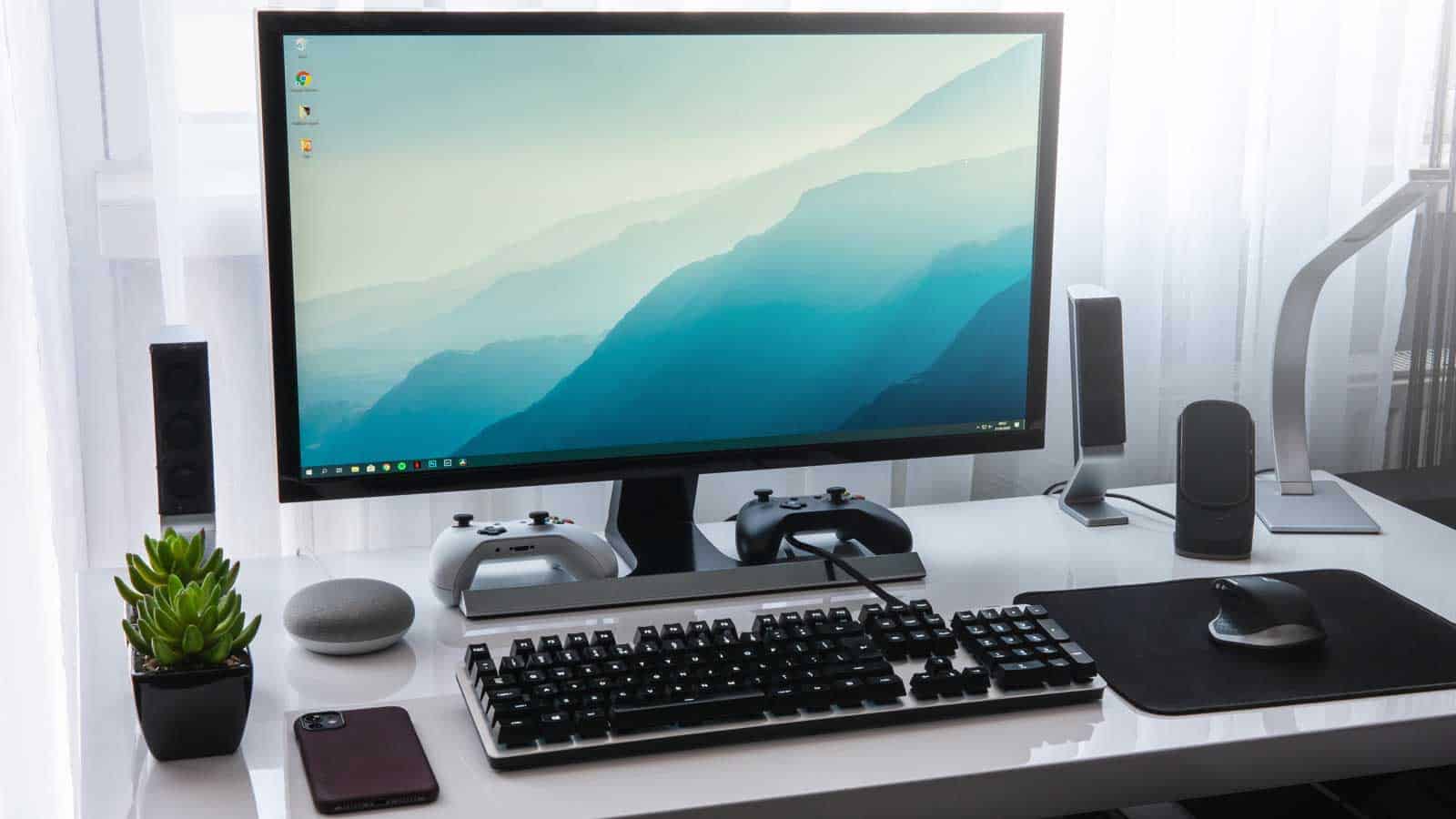Why do you need an ergonomic desk when the one you have already seems to work fine? And what exactly is an ergonomic desk anyway? Does that mean a standing desk? An adjustable desk of some kind? A desk riser or converter?
An ergonomic desk is a desk specifically designed to reduce the strain put on your body while you’re seated working for long periods of time. It also makes it easier to be comfortable to stand while you work and encourages you to get up and move around.
Ergonomics refers to the study of how humans interact with the work environment and technology. The goal of ergonomics is to design workstations and other devices that minimize physical stress while maximizing productivity.
But what features should you see in an ergonomic desk?
How tall should it be?
How can you tell if a desk is ergonomic or not?
All these questions and more are answered below.
By the way – before we get too far into it here, if you want to get more great ideas for your gaming room or home office and want to connect with other home office hackers to make your space the best join my free private Facebook group, Home Office Hacks here.
What Is An Ergonomic Desk?

Ergonomics is defined by the Occupational Safety and Health Administration as the science of fitting the job to the worker.
What we don’t realize is how much shifting around we do at our desks.
Feet under your chair.
Feet out in front crossed.
Raise your chair.
Lower your chair.
Leaning forward.
Leaning back.
Arms on armrests.
Arms up.
Shoulders relaxed.
Shoulders tense and shrugged.
At the end of the day it’s no wonder our backs hurt, our shoulders are sore, and we’re exhausted!
An ergonomic desk is designed specifically to minimize all of that.
What Features Should An Ergonomic Desk Have?

Ergonomic desk design ensures that there is adequate room for your legs, knees, and thighs by providing sufficient space between your body and the desk itself.
The height should be adjusted to allow you to sit comfortably, slightly reclined with your back straight, shoulders relaxed, and head upright.
It should have sufficient surface area to support your arms and hands when typing, writing, drawing, etc.
An ergonomic desk should also have a proper ergonomic chair that has armrests and lumbar support to keep your spine in good alignment when you’re seated too.
It should obviously have an electric switch to raise and lower the desktop surface to the perfect position for your working style.
A properly angled position for your keyboard allows your wrists to rest naturally in their neutral position. This could mean that you either place your keyboard flat on your desktop surface or on a special keyboard tray to help keep your wrists in the correct position.
Depending on the type of keyboard you use you may want to consider using an ergonomic keyboard wrist rest to ensure that your wrists are at the correct angle.
Your computer mouse should have plenty of room to move with enough space and not interfere with your monitor riser if you have one.
Speaking of monitor risers, your monitor should be at a height that will allow you to see the screen clearly without having to lean forward or bend over.
That means that you may need to elevate your monitor using a monitor arm with a vesa mount or a desktop shelf to get it to the right height for your workspace.
If you have a laptop, then make sure that you have a stable base for your laptop to prevent unnecessary stress on your neck and back.
How Do You Know If A Desk Is Ergonomic?

An ergonomic desk is designed specifically to help you maintain comfort for extended periods of time while working on your laptop, at regular desktop computer, or other kinds of work on a desktop surface.
Here’s how you can tell a desk is ergonomic:
- You face forward easily and your neck isn’t bent down, backwards, or contorted
- Your arms sit comfortably by your side and are not lifted or extended out from the sides of your body in some unnatural way
- Your hands and wrists are in a natural position not being bent to the side, up or down
- You can sit comfortably with your shoulders back with proper posture
- Your back isn’t twisted or overly upright.
- Your feet can rest flat on the floor easily without a bunch of pressure on the back of your legs
- There is ample space for your feet to move around freely
What Does An Ergonomic Desk Look Like?

If you’ve never even heard of the concept of an ergonomic desk, I’d be concerned too that they might look a little funky and throw off the vibe in your home office in a big way.
In reality, ergonomic desks look amazing.
Some have contours that will allow you to get closer to the surface and your workstation.
Some are L-shaped desks that look every bit like a regular standard desk, but have amazing adjustability features built in.
In addition, there are virtually endless options available for customization.
For example, you can add a keyboard tray to hold your keyboard and mouse if that’s the way you like to work.
You can get a real-wood desktop surface with beautiful types of wood like walnut, bamboo, white, oak and more.
You can add a monitor arm to hold your monitor at the perfect height.
You can add an adjustable foot rest to support your feet when you’re sitting at your desk.
You can add shelves to store all sorts of things like books, magazines, and more.
The possibilities are really endless.
What Is The Best Ergonomic Desk Height?

According to Jonathan Puleio, MS CPE, Managing Director at Humanscale, a company that designs and manufactures ergonomic office products, the standard desk height of 29.5 inches is too high for 95% of our population.
Being seated at the wrong height puts you at potential risk for musculoskelatal issues and disorders according to this study.
You chair should be adjusted and you should be seated at your desk in such a way to keep the flow of natural movement happening to promote comfort, not to relieve pain.
This means that you shouldn’t lock your backrest.
That’s right.
Your chair works in conjunction with your ergonomic desk like a hand fits in a glove.
You should adjust both your chair and your desk for maximum comfort and focus.
If your desk is an adjustable height desk, then it should be dialed into the ideal height for you.
How Tall Is An Ergonomic Desk?

Here’s the coolest part about ergonomic desks: they conform to you, not the other way around.
So an ideal desk height for one person is going to be different for someone else because each individual has unique needs and preferences.
That said, it’s all about getting your body into the correct posture.
This means that your feet are flat on the floor, your knees are at 90 degrees or greater, your hips are at 90 degrees or greater, with a slight reclined position you can easily see your computer or work on your desk without straining your neck.
Ideally, that means when seated your desktop surface when sitting should be somewhere between 22-33 inches from the floor, depending on your height.
If you have an adjustable standing desk then when you’re standing you should be able to maintain the same arm and elbow angles and vision line.
Are Ergonomic Desks Worth It?

Is it worth it to invest in an ergonomic desk?
Absolutely.
What’s your health worth to you?
Remember what ergonomics is: the science of making the. environment fit the worker, not the other way around.
Who likes having back pain while they’re sitting at their desk, gnawing away at them, and distracting them?
Who wants pain in their wrists and elbows from spending too much time at a desk that’s not ergonomic?
Who enjoys the discomfort from sitting at an odd position for hours on end?
As someone who’s experienced all of those things while working at desks that were not ergonomic, I have to say emphatically that I’d rather be comfortable.
Physiologically, we’re not designed to be seated for long hours on end without movement.
Being so sedentary can cause a world of health problems.
Movement is a good thing.
And a standing desk can provide that.
Even though there are some mixed opinions about the explicit benefits of standing while working, a adjustable standing desk gets you moving, and that’s the whole point.
It might help improve your overall mood or increase your productivity.
Standing desk proponents claim that they can reduce back pain by reducing sedentary time; however, there is evidence that supports both sides of the argument.
And if it helps you to be more comfortable when working then why not?
What would be a good argument against an ergonomic desk?
I’ve not come across one.
Next Steps
Want to join others who are creating the most amazing home offices and get more tips, tricks and hacks on how to make your home office the best it can be?
Join my brand new free private Facebook group, Home Office Hacks to connect with other home office hackers to make your space the best!
